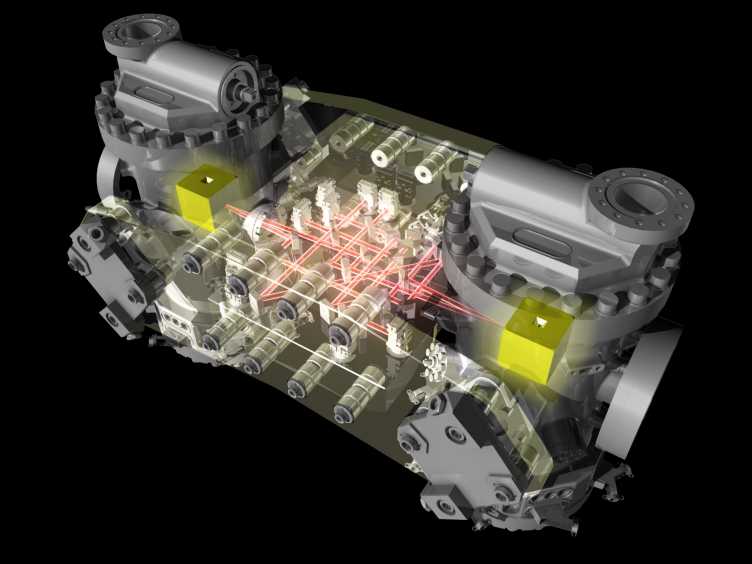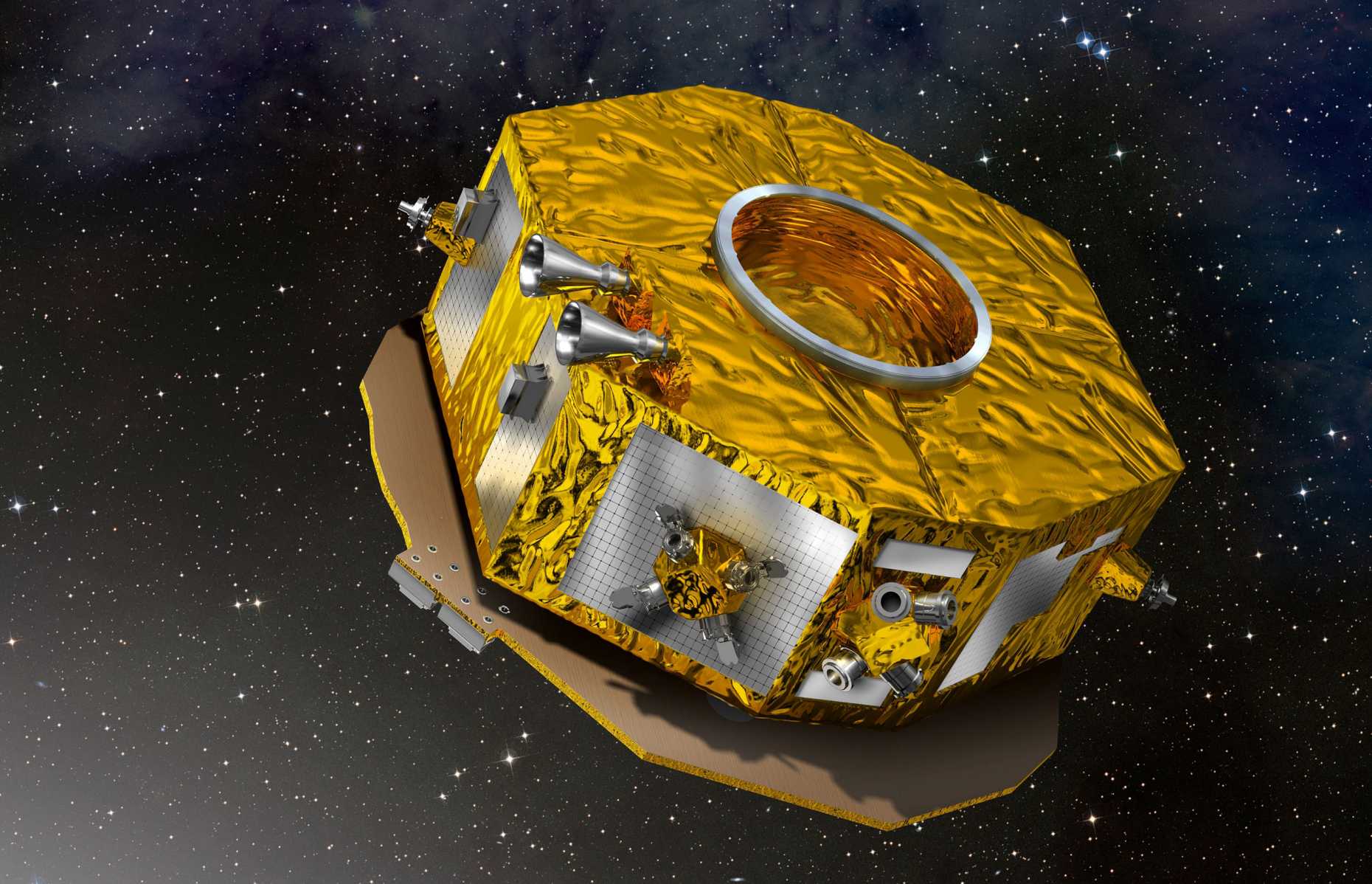The search for gravitational waves is being launched
Starting in 2034, the European Space Agency intends to use space probes to provide empirical proof of gravitational waves for the first time. A precursor mission in which ETH is participating will be initiated in 2015. ETH News discussed this with Domenico Giardini, professor at the Institute of Geophysics.
Last Friday, the European Space Agency (ESA) published the roadmap for its next large science missions. It includes a mission to search for gravitational waves in space some time near 2034. Albert Einstein predicted the existence of these waves in his general theory of relativity, but despite intensive efforts over the past few years science has not been successful in proving them empirically. The eLISA large science mission plans to measure these waves using space probes orbiting the sun, with testing of the key technology starting as early as 2015 in a precursor mission (LISA Pathfinder). ETH Zurich, through a group headed by Domenico Giardini, Professor of Seismology and Geodynamics, is part of an international consortium that is developing the precursor mission and laying the foundation for the large mission.
ETH News: What do you hope to achieve with the LISA Pathfinder precursor mission?
Domenico Giardini: A space mission to detect gravitational waves has been under discussion for many years. Everyone is well aware, though, that something like this will be very difficult because the technology necessary for the job still must be developed. Thus, the decision was taken to proceed in two steps. LISA Pathfinder includes about half the technology for the eLISA large science mission and makes it possible to test it. This precursor mission will not deliver research results about gravitational waves, but data about the advanced sensors and electronic systems.
In principle, though, the same detectors that you intend to use in the large science mission will be on board?
Fundamentally, yes. In the large science mission, though, the intent is to use laser beams to measure the distance between three space probes arranged in a triangle and which will be a million miles from each other. When a gravitational wave travels through the triangle, the distances between the probes will change slightly. The major challenge is to measure changes in distance of less than a hundred billionth of a millimetre over a range of a million miles. LISA Pathfinder, however, will be working with smaller distances. Here the same sensors will measure the distance between two gold-platinum cubes the size of table tennis balls, 35 centimetres apart. Each cube will hover in a vacuum chamber inside the space probe. The instruments in LISA Pathfinder already have a tenth of the measurement accuracy that will later be required for eLISA.
What contribution is ETH making to the LISA Pathfinder mission?
The LISA Pathfinder consortium requested our participation because we have extensive experience with electronics normally used in seismometers to detect earthquakes. In the LISA Pathfinder space probe, in addition to measuring distances using laser beams as already mentioned, a second distance-measuring system works with so-called proximity sensors. Thus, the position of the gold-platinum cubes can be determined with extremely high precision. The proximity sensors generate an electromagnetic field. If a cube moves, a change in the electromagnetic field is registered by the sensors. This measurement system is very similar to that in a seismometer. We also have experience with such systems in space missions. Our electronics group, headed by Peter Zweifel, is participating in NASA’s Insight Mars mission in which a seismometer is to be placed on the surface of the Red Planet in 2016 in order to explore its interior.

Why is this proximity sensor, which is similar to a seismometer, needed in LISA Pathfinder?
The space probe has a microdrive mechanism that can easily adjust the probe’s position, thus ensuring that the gold-platinum cubes never touch the walls of the container and are always in a state of free fall. To achieve this, the probe must always know the exact position of the cubes. Our group has collaborated on this project with Swiss industry for the past 10 years and has had the support of the Swiss Space Office. We have now delivered the electronics, and we are eagerly waiting for the probe to be launched into space in 2015. ETH Zurich will then be involved in the data analysis.
And what is the situation with the eLISA large space mission?
As soon as the LISA Pathfinder mission has been completed successfully, preparations for eLISA will start, whereby the additional technology needed for it is developed. Together with our colleagues at the University of Zurich, we will request the support of the Swiss Space Office to participate in this exciting mission. At ETH, we intend to focus not only on the construction of components for the satellite’s control electronics but also on the detection and characterisation of the gravitational waves. The team at the University of Zurich, headed by Philippe Jetzer, Professor of Theoretical Physics, will focus on the astrophysics applications and on tests of general relativity. As is the case with all other ESA large space missions, eLISA is an intergenerational project with a time horizon of 15 to 20 years, so it will be more of a project for my successor.
Can you make a prediction: using this, will we actually be able to measure gravitational waves for the first time?
When eLISA goes into orbit as planned – and if Einstein’s general theory of relativity is correct, as I assume – then we will certainly be able to use it to measure gravitational waves. It remains to be seen if it will be the first time we successfully detect gravitational waves, or if using new technology from an observatory on Earth it will be possible to detect them coming from a particularly strong source – for example, a nearby black hole in space. eLISA will be so precise that it will be possible to measure not only a few particularly strong sources, but thousands of sources, which will help to develop a new understanding of the universe.
Domenico Giardini is a professor at the Institute of Geophysics. He was head of the Department of Earth Sciences from 2004 to 2005, and served as director of the Swiss Seismological Service from 1997 until 2011.
Gravitational waves
Albert Einstein’s general theory of relativity predicts that when a mass is accelerated, it generates gravitational waves that move through space at the speed of light. The concept is similar to the electromagnetic radiation that is generated when electrical charges are accelerated. In contrast to electromagnetic radiation, though, gravitational waves have until now never been measured in a scientific experiment, as detection has proven to be quite difficult. The eLISA Project will attempt to measure the gravitational waves that result, for instance, from the fusion of two black holes, using what is known as a laser interferometer (see interview).


